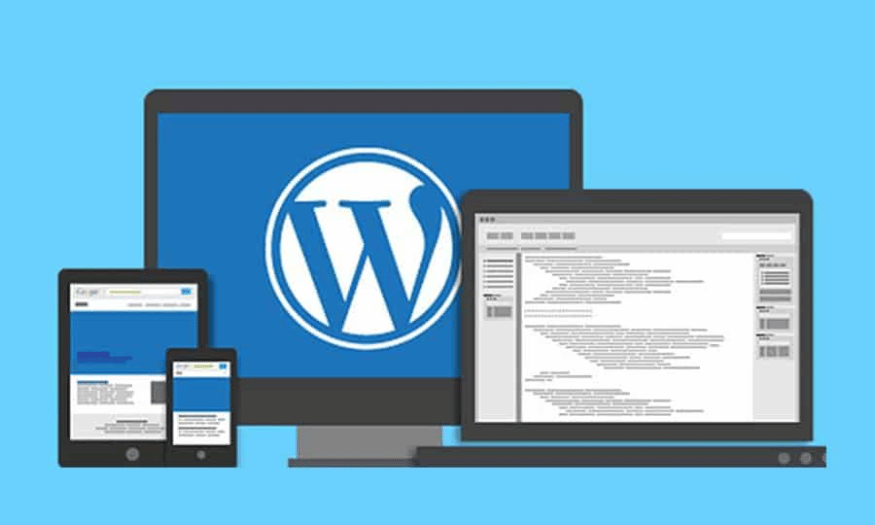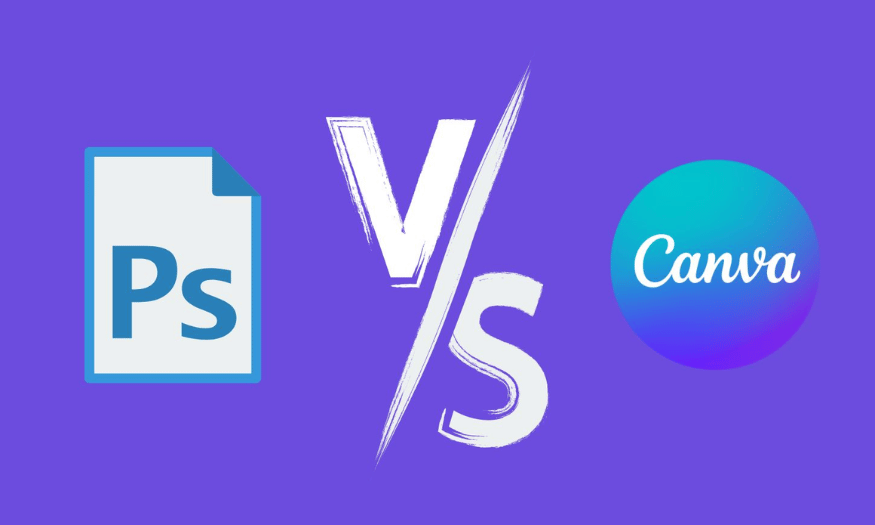Best Selling Products
16 Criteria for Building a Standard SEO Website
Nội dung
- 1. What is SEO standard website design?
- 2. Benefits of building a SEO-standard website for businesses
- 2.1. Increase organic traffic to your website effectively
- 2.2. Increase conversion rate
- 2.3. Save budget
- 3. 16 latest criteria for building a standard SEO website
- 3.1. Domain name and hosting
- 3.2. Update title tag and meta description tag
- 3.3. Quality Content
- 3.4. SEO standard images
- 3.5. Build a reasonable layout
- 3.6. Fast page loading speed
- 3.7. Set up full Heading tags
- 3.8. Mobile-friendly website
- 3.9. Optimize clear URLs
- 3.10. Building internal link network
- 3.11. Building quality external links
- 3.12. Create 404 pages for links not found
- 3.13. HTTPS Security
- 3.14. Create Sitemap
- 3.15 SEO-standard UX/UI design
- 3.16. Using Google tools
- 4. Conclusion
In today's booming digital age, building a SEO-standard website is not just an option, but an essential requirement for any business that wants to survive and develop in the online market. A well-optimized website not only helps improve rankings on search engines but also brings the best experience to users. Let's explore with Sadesign 16 important criteria to help you build a SEO-standard website, from website architecture to content, to enhance your online presence.

In today's booming digital age, building a SEO-standard website is not just an option, but an essential requirement for any business that wants to survive and develop in the online market. A well-optimized website not only helps improve rankings on search engines but also brings the best experience to users. Let's explore with Sadesign 16 important criteria to help you build a SEO-standard website, from website architecture to content, to enhance your online presence.
1. What is SEO standard website design?
SEO-standard website design is the process of building a website to best meet Google's search criteria. The main goal of this design is to help Google easily collect information and evaluate the quality of content on the website, thereby improving its ranking position on search engine results pages (SERP). When a website is optimized for SEO standards, its visibility will increase, helping users easily find the information they need.
To achieve SEO standards, a website needs to have a reasonable structure, quality content and be easy to understand. The website structure needs to be organized logically, with clear links between pages. The content needs to be not only optimized for keywords but also bring real value to the reader. Finally, the website also needs to attract users' attention, thereby generating higher traffic and increasing conversion rates.
.png)
2. Benefits of building a SEO-standard website for businesses
In today's digital age, searching for information and conducting transactions online has created many opportunities for businesses. To take advantage of this, building a standard SEO website has become an important factor to help businesses easily reach and serve customers. Optimizing the website not only improves the user experience but also helps to enhance the online presence of the business in the eyes of search engines.
A standard SEO website not only helps increase visibility but also enhances brand reputation. With a reasonable structure and quality content, the website will easily attract and retain users, thereby creating a stable and long-term source of potential customers.
2.1. Increase organic traffic to your website effectively
One of the most prominent benefits of SEO-friendly website design is the ability to increase organic traffic. Search engines like Google often prioritize websites with rich, useful and regularly updated content. When your website meets these standards, it will have a higher chance of appearing in the top search results.
Increasing organic traffic not only helps increase the number of users but also expands the potential customer base. Today's consumers often search for information online before making a purchase decision, so a standard SEO website will help businesses easily reach more customers.
2.2. Increase conversion rate
A website that is optimized from structure to content will contribute significantly to increasing conversion rates. When users find the information they need easily, they tend to stay on the site longer and take actions such as registering or making a purchase. A high presence in search results also builds brand credibility, making customers more confident in products and services.
Increasing conversion rates not only brings immediate profits, but also helps businesses build a community of loyal customers. Satisfied customers will tend to return and refer others, thereby creating a positive loop for business revenue.
2.3. Save budget
SEO is considered an effective and low-cost marketing strategy, helping businesses achieve their goals without having to invest too much in advertising. SEO-standard website design may take time to implement, but the long-term benefits it brings are very valuable. When customers proactively find businesses through natural search results, businesses will save a large budget for advertising campaigns.
In addition, a good SEO strategy will help businesses maintain a stable amount of traffic without having to spend continuously on advertising. This not only helps reduce costs but also creates a natural source of customers, contributing to improving business efficiency in the long term.
.png)
3. 16 latest criteria for building a standard SEO website
Building a website with SEO standards not only helps businesses easily reach potential customers but also improves rankings on search engines. To achieve these goals, businesses need to focus on many important criteria, from optimizing domain names, interface structure, to page loading speed and content quality. Below are the latest criteria that you need to pay attention to in order to build an effective website.
A SEO-standard website is not just a simple information page; it is also a powerful marketing tool that helps optimize costs and increase conversion rates. With increasingly fierce competition, applying modern SEO criteria will help businesses stand out and attract customers' attention.
3.1. Domain name and hosting
The domain name is the first thing users see and is also one of the most important factors that affect searchability. To help Google rank your website highly, choose a domain name that is closely related to the content and contains the main keywords. This not only helps improve searchability but also builds brand credibility. An old domain name will bring more trust in the eyes of both users and search engines.
In addition, hosting also plays an indispensable role in SEO optimization. Choosing a hosting provider with high speed and stability is essential. If the hosting has problems or is slow, Google will rate your website low, affecting search rankings. If your business operates mainly in Vietnam, prioritize choosing domestic hosting and servers to improve access speed.
3.2. Update title tag and meta description tag
Title tags and descriptions are not only important elements in SEO, but also the first "billboards" that users see when searching for information. To attract attention, the title tag should be short, concise and contain the main keyword, while the description tag should clearly reflect the content of the article. According to Google's recommendations, the title should be a maximum of 70 characters and the description should be around 150-300 characters, with the main keyword at the beginning.
Proper presentation will help increase click-through rates (CTR) from search results pages. Remember that these guidelines may change over time, so regular updates and adjustments to new algorithms are essential to maintaining your website's appeal.
3.3. Quality Content
Content is king in the world of SEO. Copying content from other sources not only violates copyright but also reduces the reputation of the website in the eyes of Google and users. Instead, focus on creating quality content that solves problems that your target customers are interested in. The content should be presented clearly, with feasible solutions, thereby building strong relationships with customers.
When users find your content useful, they will return to search for information more often. This not only increases engagement but also helps improve search rankings, bringing many long-term benefits to businesses.
.png)
3.4. SEO standard images
Images not only help make content more appealing, but also play an important role in SEO optimization. Search engines appreciate websites with relevant images, so you need to pay attention to adding attributes such as Title and Alt for each image. This not only improves searchability but also supports a better user experience.
However, avoid using too many images, as this can slow down page loading speed, affecting SERP rankings. If you cannot reduce the number of images, optimize the size of each image to less than 100KB to ensure high page loading speed.
3.5. Build a reasonable layout
The layout of an SEO-friendly website not only affects the user experience, but also determines how search engines crawl it. Designing a logical structure will help each piece of content have a separate URL, making it easier to index and display when users search for information. To achieve this, you need to pay attention to six important layout elements, including the Header, Breadcrumb Menu, and Page Title.
It is important that each page has only one Title, which helps Google identify the main content effectively. Furthermore, the text should be clearly formatted with short paragraphs and subheadings, making it easy for readers to follow. Don’t forget the author information and Footer, as they not only provide additional information but also build trust with users.
3.6. Fast page loading speed
Page load speed is a vital factor in the online world, and it cannot be underestimated. According to statistics from Google, if a website takes 3 to 5 seconds to load, the possibility of losing customers can be up to 90%. Therefore, designing an interface that is easy to use, smooth and optimizes page load speed is extremely important.
A fast loading website not only provides a good user experience but also helps improve Google rankings. When page loading speed is optimized, users tend to stay longer, reducing bounce rates, and Google Bots can easily crawl and index the page.
.png)
3.7. Set up full Heading tags
Heading tags, such as Heading 1, Heading 2, and Heading 3, play an important role in highlighting the structure of the article. They not only help readers easily grasp the content, but also help Google understand the main content of the page. Using SEO keywords in these tags will increase the visibility of the page in search results.
Although there are up to 6 different heading levels, you should limit the use to Heading 4 to avoid confusing the article structure. Dividing too many headings can cause the article to be rated low and affect the SEO score of the page, so be careful in how you use them.
3.8. Mobile-friendly website
In the digital age, optimizing your website for mobile devices has become extremely necessary. By 2023, there will be more than 6 billion mobile internet users, and Google also relies on the mobile experience to evaluate and rank websites. If your website is not compatible with mobile devices, you will lose a large amount of traffic.
Responsive design not only improves user experience but is also an important factor in improving website rankings on search engines. Ensure that elements such as images, text and buttons work well on all screen sizes.
3.9. Optimize clear URLs
A clear and concise URL is not only easy for users to remember, but also increases the SEO of the website. Make sure the URL contains the main keyword and is written concisely, avoiding special characters, numbers or uppercase letters. Using Vietnamese without accents and separating words with hyphens (“-”) will help improve readability.
Avoid using automatic URLs with numbers (e.g. www.example.com/?p=578544 ) and set up a standard robots.txt file to make it easy for Google Bot to crawl. A clear URL structure not only helps search engines understand the content but also creates trust for users.
.png)
3.10. Building internal link network
Using internal links is a smart strategy that helps users navigate between related content on a website. Not only does it improve the user experience, but these links also increase the credibility and SEO of the page. When users can easily find the information they need, they are more likely to stay longer and engage more.
However, when setting up internal links, you need to ensure the relevance between the content. Suggesting unrelated links can make the website “chaotic” in the eyes of users and Google Bot, making it difficult to find information. A reasonable internal link network will support both users and search engines in discovering your content.
3.11. Building quality external links
External links, also known as backlinks, are an important part of an off-page SEO strategy. They not only help increase the credibility of a website but also improve its ranking on search engines. External links can be understood in two ways: website owners use links to other websites to supplement information, and external users link their URLs to your website.
When high-authority websites link to your website, it is like receiving a “vote” from a third party, affirming the value and quality of the content you provide. Therefore, building quality external links not only helps improve rankings but also creates a strong network of links between websites, making it easier for users to find useful information.
3.12. Create 404 pages for links not found
A 404 page is a page that appears when a user tries to access a URL that does not exist on a website. This page can appear for a variety of reasons, such as a broken link, a deleted page, or a mistyped address. Without a good 404 page, users may become frustrated and leave the website, increasing the bounce rate.
To effectively navigate users when they encounter a 404 error, you can create a 404 page that informs users that the URL does not exist and encourages them to search for information elsewhere, or redirects them to the home page. This not only improves the user experience, but also keeps them coming back to your website to find information.
.png)
3.13. HTTPS Security
Security is an indispensable factor in website construction, and using HTTPS is the most effective way to protect user information. A website with low security is an easy target for viruses and hackers, negatively affecting your reputation and brand. Google has also confirmed that HTTPS is one of the important criteria when evaluating SEO-standard websites.
Google always prioritizes protecting the interests of users, so if your website is not secure, it is likely that you will not be ranked highly. Investing in HTTPS not only helps protect information but also builds trust with customers, thereby improving their user experience.
3.14. Create Sitemap
A sitemap, or sitemap, is a text file that contains all of your website's URLs along with related data. Setting up and using a sitemap is important because it helps search engines find and access your website's content quickly and efficiently. A sitemap also helps Google Bot better understand the structure of your website, thereby improving its indexing capabilities.
An optimized sitemap will help improve SEO efficiency, helping your website easily achieve higher rankings on search engines. Don't forget to update the sitemap when there are any changes on the website to ensure that search engines always have the latest information.
3.15 SEO-standard UX/UI design
User experience (UX) and user interface (UI) design are decisive factors in building a SEO-standard website. UX/UI design not only affects customer experience but also has a direct impact on Google rankings. A good design will create comfort and satisfaction for users, helping them easily find information and make quick decisions.
In addition, websites with SEO-standard UX/UI design retain users longer, which helps Google Bot evaluate the time users stay on the page well. A friendly and attractive design will not only improve the user experience but also create more opportunities for customer conversion.
.png)
3.16. Using Google tools
To build a user-friendly and SEO-friendly website, it is important to analyze core metrics. Tools like Google Analytics and Google Search Console will help you track metrics related to website visits and user interactions. Data from these tools will provide insight into how users interact with your content, thereby helping you come up with effective optimization strategies.
By understanding these metrics, you can tailor your content and design to better suit your users’ needs and habits. This not only enhances the user experience but also improves your search engine rankings, which can bring many benefits to your website.
4. Conclusion
Building an SEO-friendly website is not just about optimizing technical elements, but also about creating the best user experience. From choosing a domain name, optimizing content, to designing a user-friendly interface, each element plays an important role in improving search engine rankings.
By applying the above criteria, you will not only create a website that easily attracts customers, but also build credibility and trust in the eyes of Google. This will not only increase traffic but also improve conversion rates and build long-term relationships with customers.












































